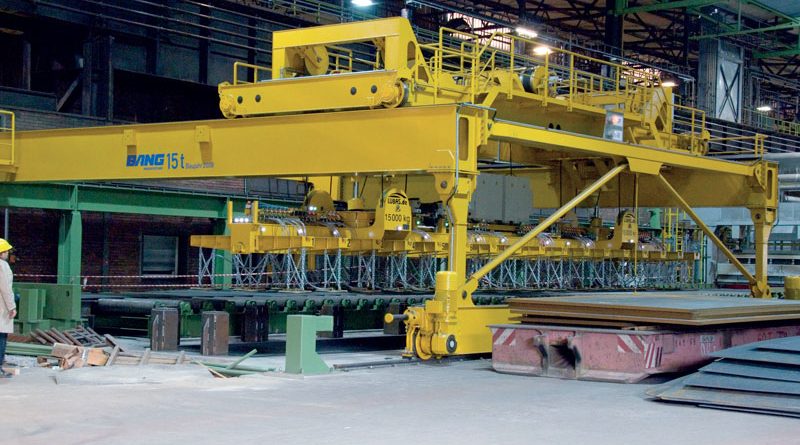Safe Handling of Heavy Loads with Vacuum Lifting Systems
Two BL67 I/O stations and 53 pressure sensors by Turck Banner allow Lubas UniTravMega vacuum lifting system to safely handle heavy loads. This equipment is designed for the lifting/conveying of extremely heavy steel plates.
by Alma Castiglioni
Lubas, a German machine and equipment manufacturer has made a name for itself when it comes to vacuum lifting systems for extremely heavy loads. For one of its key customers the company built two UniTravMega crossbeams with a lifting capacity of 15 tons each. Each of them is equipped with 51 suction cups, installed onto a rugged base plate in three rows.
The vacuum of each individual suction cup is recorded by Turck pressure sensors from the PS series and shown directly on site via the display. Lubas has installed two BL67 I/O stations to record and forward the measured values to the controller.
Temperatures in the limit range may jeopardize the electronics
The weight of the steel plates is not the only challenge for the vacuum lifting systems. When compensating for large sheets, namely heating in industrial furnaces and subsequent “quenching” temperatures above 200°C are recorded directly on the sheet, which could damage the suction cups, the steel structure as well as the pipe connections and the entire electronics of the hoists, if left unprotected for too long. Temperatures of over 200 °C develop directly on the sheets. While the special vulcanized elastomers of the vacuum suction cups can withstand temperatures of up to 250 °C, the electronics built into the top side of the steel structure are considerably more sensitive.
Although the crossbeam is not permanently positioned above the broiling hot sheets, you have to account for an average temperature of 60 to 70 °C. This places a high demand on the electronics.
A rugged solution to withstand a critical environment
For this special environment, Turck has provided the right solution with the BL67 remote I/O station and pressure sensors from the PS series. Lubas was building the decentralized concept with the BL67 stations for the first time because they used to do everything using terminal boxes in the control cabinet. Rapid installation using M12 plug-in connectors and electronics modules proved to be a considerable advantage.
The compact fieldbus stations are an additional advantage: for the BL67, Turck also offers Ethernet gateways that can be used to connect the lifting systems to the operator‘s company network, thus providing customers with the opportunity to monitor via their own company network how many tons the crane has moved or how many pipes have gone into production.
Both BL67 stations used in the UniTravMega record the signals from the 53 pressure sensors installed above the vacuum suction cups. Their pivot and swivel displays make it possible to easily and directly check each individual vacuum suction cup and conveniently program them using only 3 push buttons, this makes laptops or other external programming devices redundant.

